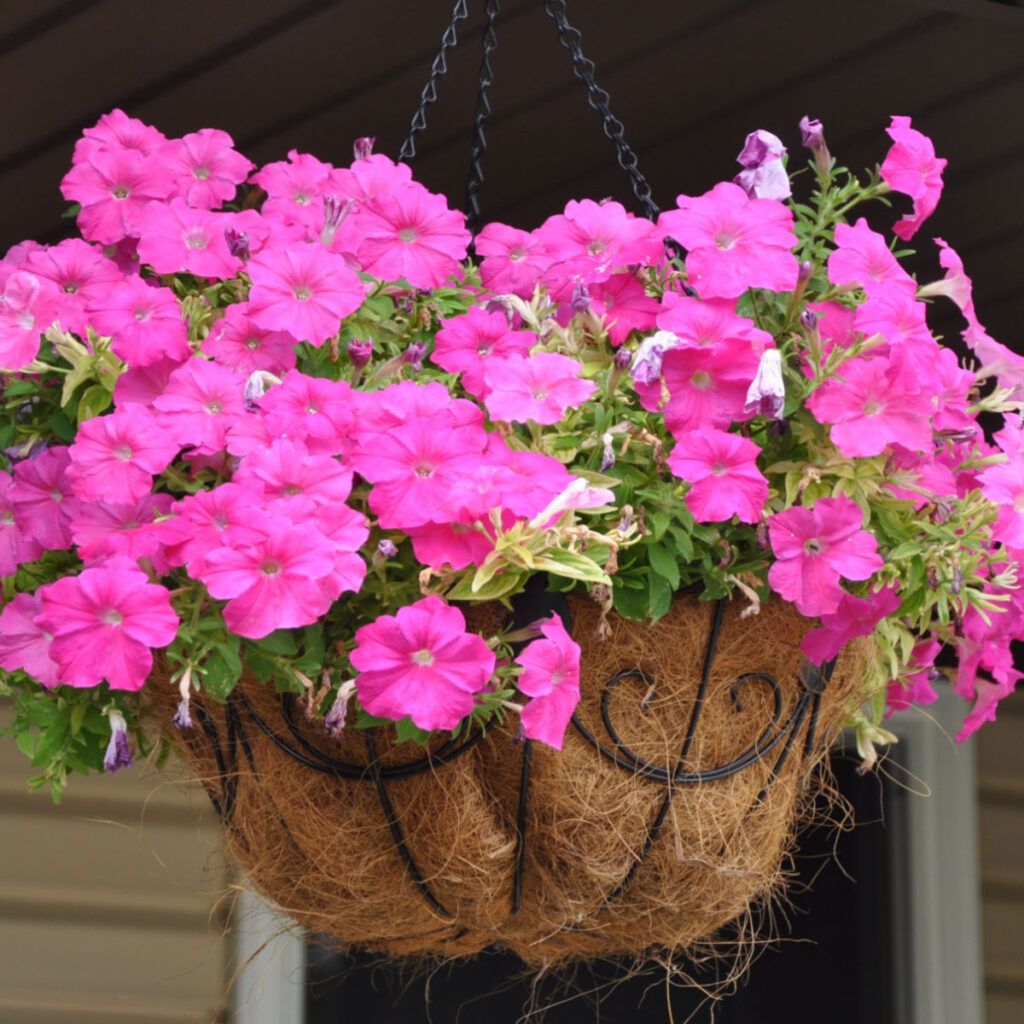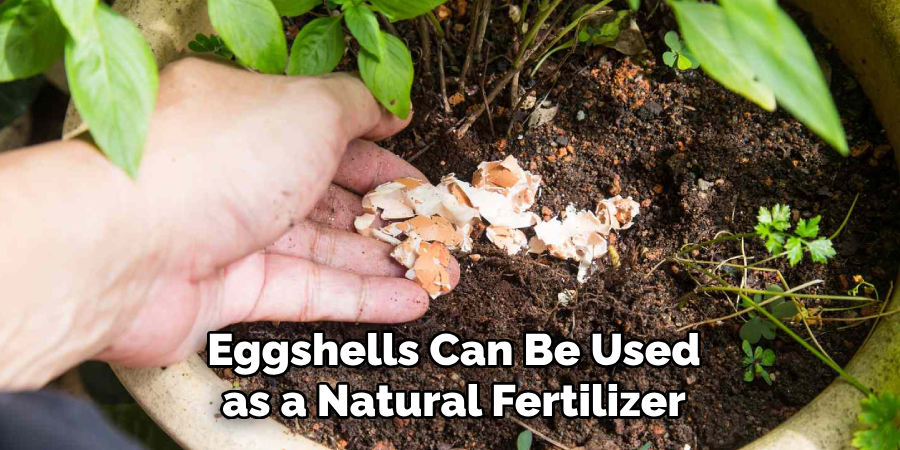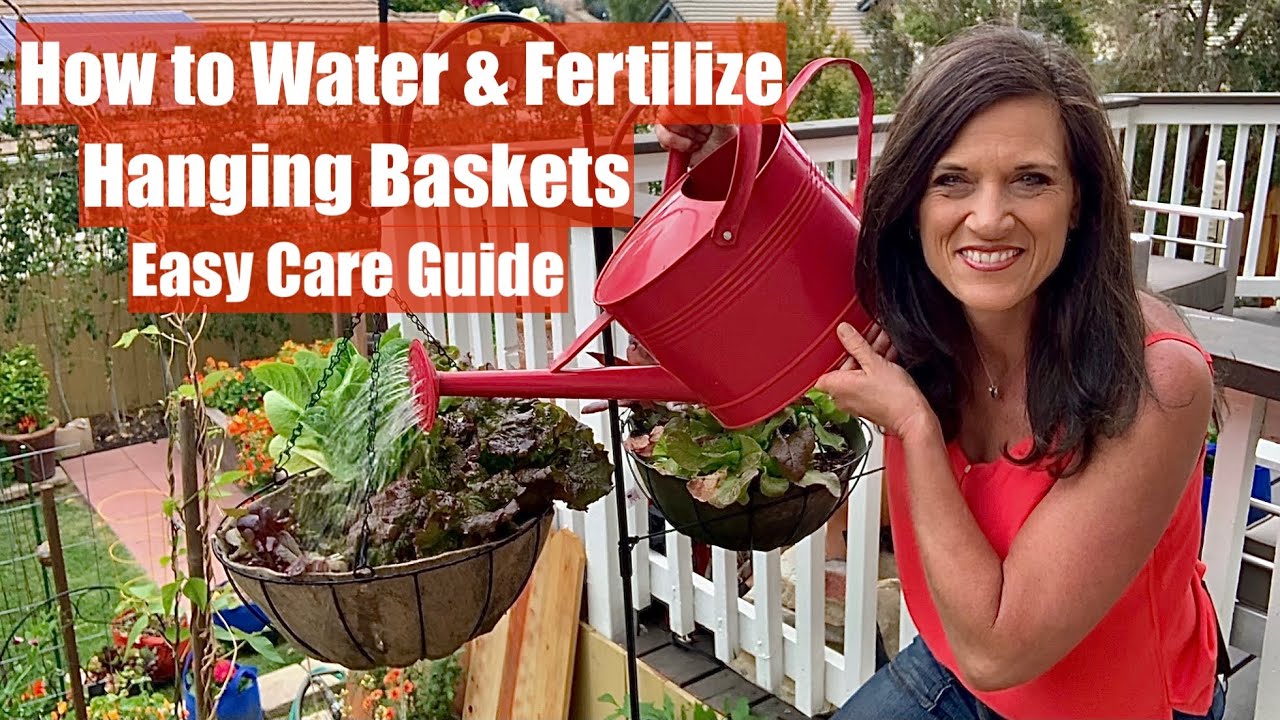To fertilize hanging baskets, apply a slow-release fertilizer in the spring and use a water-soluble fertilizer every two weeks during the growing season. Hanging baskets benefit from regular feeding to promote healthy growth and vibrant blooms.
Hanging baskets are a popular way to add beauty and color to patios, balconies, and gardens. However, to keep them looking their best, proper fertilization is essential. By providing essential nutrients, fertilizers promote healthy growth and ensure abundant blooms throughout the season.
In this guide, we will discuss the best practices for fertilizing hanging baskets, including the types of fertilizers to use and the frequency of application. With the right fertilization routine, you can enjoy vibrant and thriving hanging baskets that will impress everyone who sees them. Let’s explore the key steps to fertilizing your hanging baskets for optimal results.

Credit: simplegardenlife.com
How to Fertilize Hanging Baskets: Step by Step Guide
Choosing The Right Fertilizer For Hanging Baskets
Choosing the right fertilizer for hanging baskets is crucial to ensuring their health and beauty. Proper fertilization promotes vibrant and luscious blooms while providing essential nutrients to the plants. When selecting fertilizer, consider factors such as the nutrient requirements of different plants and the types of fertilizers available.
Slow-release fertilizers gradually release nutrients over time, requiring less frequent application. On the other hand, liquid fertilizers provide a quick nutrient boost but may require more frequent application. Another consideration is the choice between organic and synthetic fertilizers. Organic fertilizers are derived from natural sources and are environmentally friendly, while synthetic fertilizers are chemically manufactured.
By understanding these factors and making informed choices, you can provide the optimal fertilization for your hanging baskets, enhancing their overall growth and blooming potential.
Timing And Frequency Of Fertilizing Hanging Baskets
Determining the appropriate timing to fertilize hanging baskets is crucial for optimal plant growth. Frequency of fertilization plays a significant role in maintaining vibrant and healthy plants. Signs of nutrient deficiency or excess should be carefully monitored to understand the specific needs of each hanging basket.
Adjusting the fertilization schedule based on weather conditions is essential to ensure that the plants receive the right amount of nutrients. By avoiding overused words and phrases, we can maintain the reader’s interest and deliver seo-friendly content that is unique and easy to understand.
With a concise and active voice, we can provide valuable information on how to fertilize hanging baskets effectively.
Proper Techniques For Fertilizing Hanging Baskets
Fertilizing hanging baskets requires proper techniques for optimal plant health. Start by preparing the hanging basket for fertilization, checking drainage, and adjusting soil composition if needed. Select the right container and size to accommodate the plant’s growth. Apply fertilizers correctly by measuring and mixing the fertilizer solution accurately.
To ensure uniform distribution of fertilizer, use appropriate techniques. Be cautious of over-fertilization and leaching, which can harm the plants. Additionally, follow additional care tips to maintain healthy plants, such as creating a proper watering schedule and considering the water requirements.
Lastly, pruning and deadheading techniques help promote growth and maintain the overall appearance of the hanging basket plants. By following these steps, you can ensure the success of your fertilizing efforts and enjoy beautiful and thriving hanging baskets.
Troubleshooting Common Fertilization Problems
Fertilizing hanging baskets can sometimes lead to common problems. One such problem is fertilizer burn or toxicity, which can be identified by symptoms like yellowing leaves or stunted growth. To address over-fertilization, it’s important to remediate the issue by flushing out excess fertilizer with water.
Nutrient deficiencies can also occur in hanging baskets, and these should be treated by using appropriate fertilizers or supplements. Pests and diseases related to fertilization can be managed by regularly inspecting the baskets and using organic pest control methods. Moreover, preventing fertilizer runoff and its environmental impact is crucial.
This can be achieved by using slow-release fertilizers, reducing the amount of fertilizer applied, and avoiding excessive watering. By addressing these common fertilization problems, you can keep your hanging baskets healthy and thriving.
Diy Homemade Fertilizers For Hanging Baskets
Hanging baskets can benefit greatly from homemade fertilizers. Organic options are a popular choice for many gardeners due to their environmental friendliness and cost-effectiveness. One recipe that can be easily made at home is compost tea, which provides essential nutrients to the plants.

Another option is to use a banana peel solution, which is rich in potassium and phosphorus. Additionally, eggshells can be used as a natural fertilizer, providing calcium to the plants. However, when using homemade fertilizers, it is important to take precautions and considerations.
Avoid over-fertilizing, as it can harm the plants. Also, make sure to follow the proper dilution ratios for each fertilizer. By using homemade fertilizers, you can save money and have healthier, more vibrant hanging baskets.
Frequently Asked Questions For How To Fertilize Hanging Baskets
How Often Should I Fertilize My Hanging Baskets?
You should fertilize your hanging baskets every two weeks during the growing season to ensure they receive enough nutrients for healthy growth and abundant blooms.
What Type Of Fertilizer Is Best For Hanging Baskets?
A balanced, water-soluble fertilizer with a ratio of 10-10-10 or 20-20-20 is recommended for hanging baskets. This will provide the essential nutrients needed for overall plant growth and flowering.
Can I Use Organic Fertilizer For Hanging Baskets?
Yes, you can use organic fertilizer for your hanging baskets. Look for organic options that are specifically designed for container plants. These fertilizers are derived from natural sources and provide a slow-release of nutrients to the plants.
How Do I Fertilize My Hanging Baskets?
To fertilize your hanging baskets, dilute the fertilizer according to the package instructions. Apply the diluted fertilizer to the soil, avoiding direct contact with the foliage. Water the baskets thoroughly after fertilizing to ensure proper nutrient absorption.
What Are The Signs Of Over-Fertilizing Hanging Baskets?
Over-fertilizing hanging baskets can cause fertilizer burn and damage to the plant roots. Signs of over-fertilization include wilting leaves, yellowing foliage, stunted growth, and leaf tip burn. It is important to follow the recommended dosage to avoid these problems.
Can I Fertilize Hanging Baskets In Winter?
No, it is not necessary to fertilize hanging baskets during the winter months as plant growth slows down. Resume fertilizing in spring when the plants start actively growing again.
Conclusion
Fertilizing hanging baskets is a crucial step in ensuring their health and vibrancy. By understanding the specific needs of your plants and using the right fertilizer, you can promote strong growth and abundant blooms. Regularly assessing the nutrient requirements, watering diligently, and following a consistent fertilization schedule will help maintain optimal conditions for your hanging baskets.
Remember to read the instructions carefully and avoid over-fertilization, as this can result in negative outcomes. Additionally, consider supplementing with organic fertilizers and incorporating beneficial microbes to enhance the overall health of your plants. By implementing these tips and tricks, you can enjoy lush, beautiful hanging baskets that will bring joy to any outdoor space.
Happy gardening!

